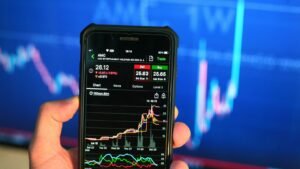Japan is one of the most active forex trading markets in the world, which is to be expected, as the Japanese yen is one of the major currencies and the third most traded currency in the world.
However, understanding why Japan accounts for a third of the global FX trading volume requires the consideration of several factors, such as the health of the Japanese economy and the JPY, its role on the global FX market and the popularity of major trading platforms like the mt5.
As an advanced economy, Japan produces value added products in numerous industries, which means that most Japanese companies are focused on exports. This makes currency conversions an integral part of the Japanese economy, which is further compounded by the popularity of retail and institutional trading in the country.
Why forex trading became so popular in Japan
One of the most important reasons behind the popularity of retail forex trading in Japan is the long period of negative or near-zero interest rates in the country, which makes borrowing incredibly simple. With traditional savings accounts offering little to no returns, many individual investors turned to forex trading to seek higher profits. Strategies like carry trading became especially popular due to allowing traders to profit from interest rate differentials between currencies.
Japan’s forex regulations
Japan’s regulatory framework has played an integral role in the popularity of retail forex trading in the country. The Financial Services Agency (FSA) and the Japan Financial Futures Association (JFFA) created a well-regulated, transparent environment that made retail forex trading safer and more accessible. Japan was one of the first countries that required forex brokers to hold client funds in segregated accounts.
Furthermore, advanced technology and the propensity of Japanese traders to master complex trading systems has also contributed positively to the rising popularity of forex trading in the country.
The Tokyo forex trading session
The Tokyo forex trading session, also known as the “Asian session”, is one of the key periods in the global forex market and plays a significant role in Japan’s vibrant retail trading culture.
It officially opens at 9:00 AM Tokyo time and closes around 6:00 PM, although global forex activity can start picking up a few hours earlier as liquidity builds in the region.
During the Tokyo session, trading activity is heavily centered around the Japanese yen (JPY) and currency pairs involving other Asian-Pacific currencies, such as the AUD/JPY, and NZD/JPY. Major financial hubs like Singapore and Hong Kong also contribute to the liquidity during this time.
For Japanese retail traders, the Tokyo session offers the advantage of trading during their daytime hours, aligning well with their work schedules and lifestyles. Because Japanese retail traders are so active, they can sometimes create noticeable price movements, particularly in yen-related pairs.
It is also worth noting that overall market volatility is lower during the Tokyo session, as opposed to the London and New York forex trading sessions, which further adds to the activity during Tokyo hours.
Export-driven economy
Japan’s export-driven economy is deeply connected to the strong retail forex trading culture in the country. As one of the world’s largest exporters – especially in automobiles, electronics, and machinery – Japan’s economic health is highly sensitive to currency fluctuations, particularly the strength or weakness of the Japanese yen.
When the yen strengthens, Japanese goods become more expensive abroad, potentially hurting exporters’ profits. When it weakens, exports become more competitive globally. This constant tension keeps exchange rates, especially USD/JPY and EUR/JPY, highly relevant in everyday economic discussions, making forex more familiar to the general public than in many other countries.
Retail traders in Japan are well aware of these dynamics. Many view forex trading not only as a speculative opportunity, but also as a hedge against broader economic risks tied to currency movements. For example, carry trading became particularly popular during periods of economic stagnation.
Additionally, the Japanese media frequently reports on forex rates because of their impact on the corporate sector and consumer prices. Such widespread coverage keeps forex trading visible and accessible to retail investors.
In this environment, Japanese traders often approach forex with a blend of economic awareness and strategic thinking, linking macroeconomic trends directly to personal trading decisions. The export economy’s sensitivity to currency movements effectively nurtures a forex-savvy retail trading population.













































































































